PEACE PACTS
A peace pact is not just any other ritual. For the indigenous people, it is considered as sacred and binding for life. Called by a host of ethnic terms for the various ethnographic tribes, the ceremony embodies the collective stand of the tribe or cluster of tribes in a tribal community.
Indigenous peoples in Mindanao are basically peace-loving people. They co-exist with other beings without unnecessary desires for hatred and war. In the events of conflicts whether internal or external, they have a traditional way of resolving issues — the peace pacts.
Click photo to enlarge
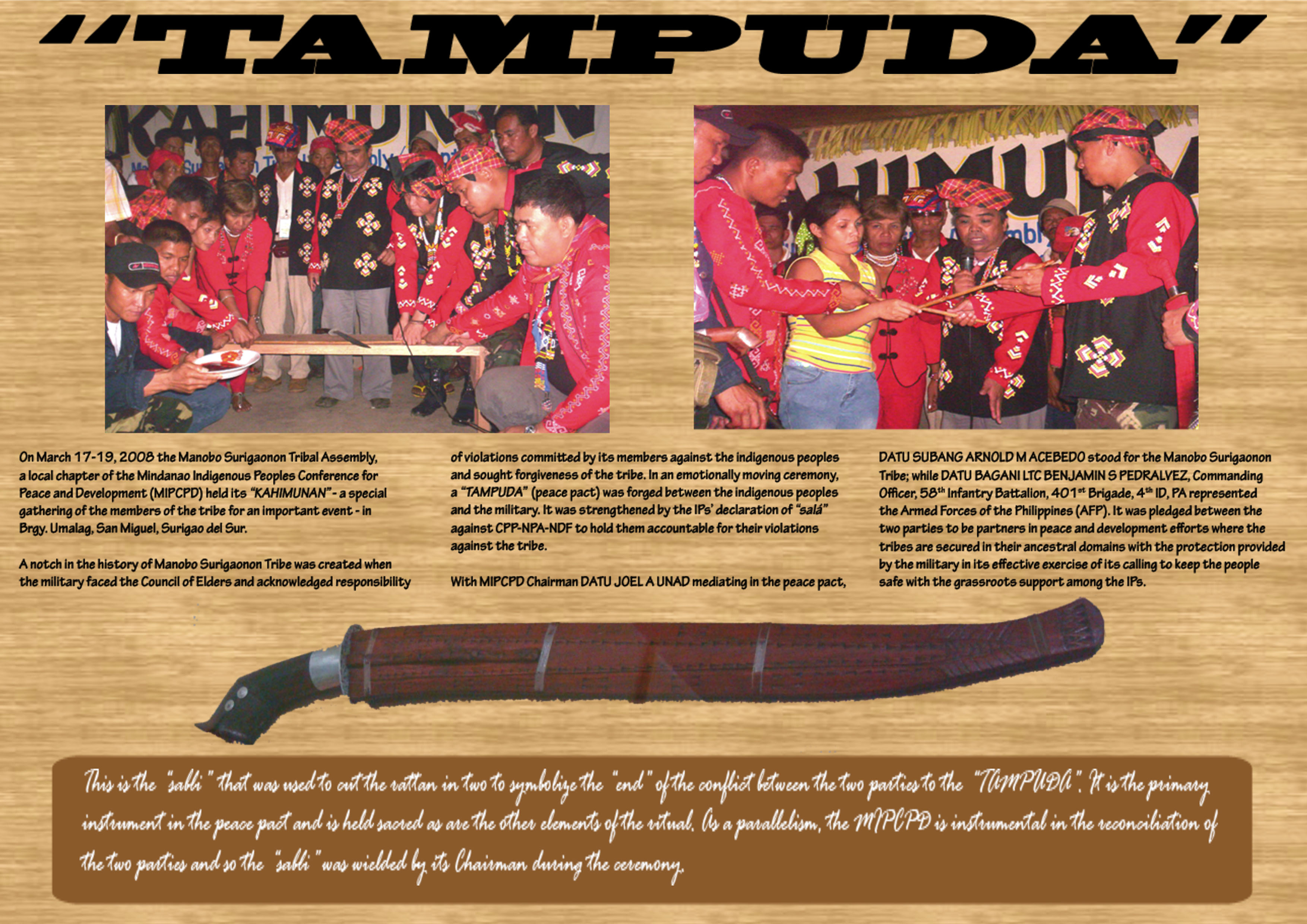
Depending on preferences of the tribe. A peace pact starts with a ritual where animals (chicken or pig or both) are sacrificed to “cleanse” the participants and to “appease the spirits” requesting their guidance to the ritual. Other elements like native chicken eggs, salt, betel nuts, native wine, rice grains and other traditional stuff are present; each one symbolizing some-thing important such as life, promise. territory, etc. It involves the ‘breaking of the past’ to assure that past conflicts will never resurface between the two parties to the agreement. This is usually symbolized by using a “sabli” or jungle bolo to cut the “uway” or rattan stick; or by breaking plates with a rock. or by sacrificing an animal and placing it inside a rolled mat with broken jars; or by any means the specific tribe involved prescribes. The symbolism is almost the same: the chosen ritual element must be reduced to a form that cannot be returned to its original state because it stands for the agreement that past is past and it can never be revived. Once an issue is resolved, it is finished.
Click photo to enlarge
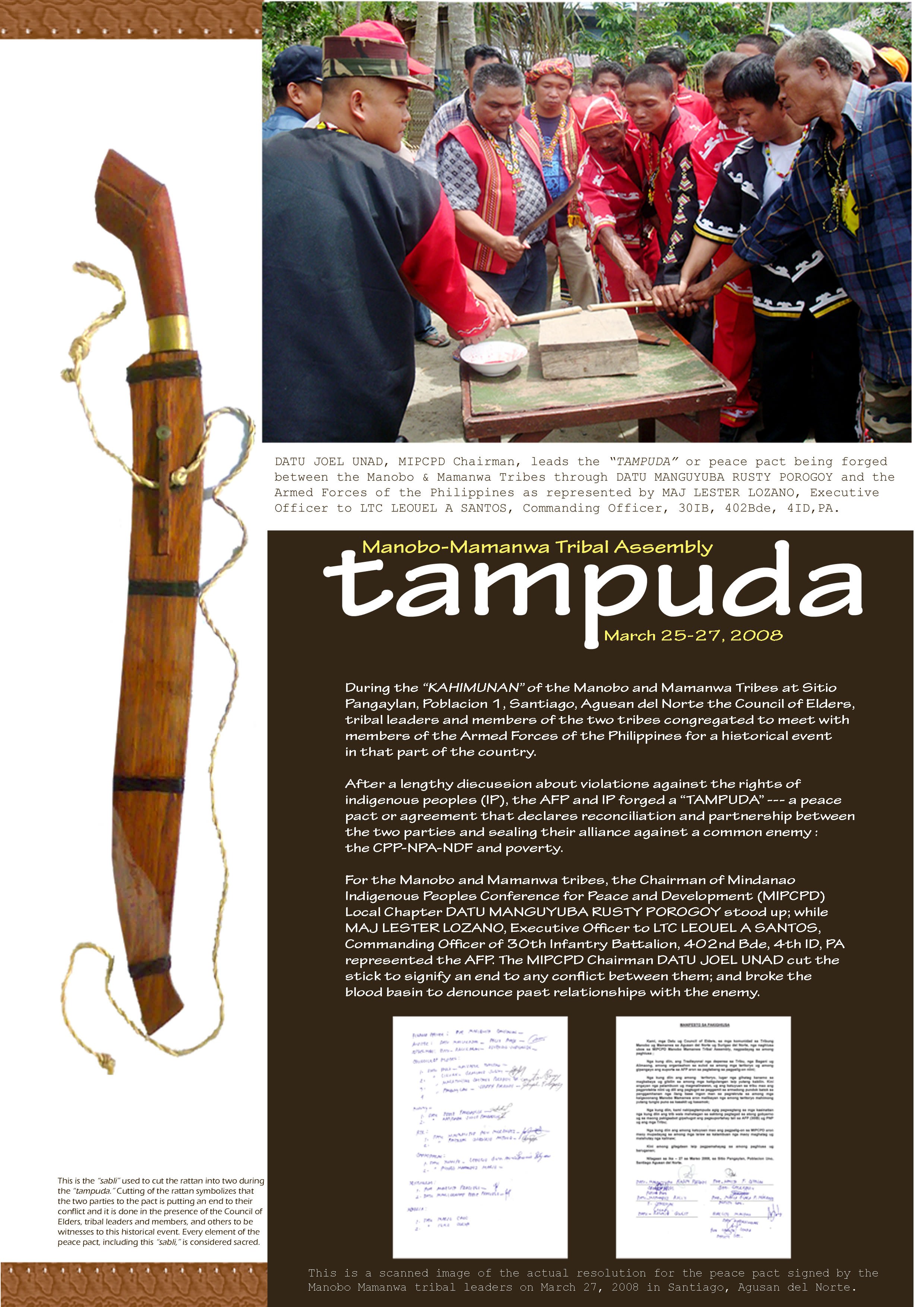
During the tribal assemblies conducted in 34 cluster IP communities, the MIPCPD and Task Force Gantangan become witnesses to (and were jointly instrumental in) the forged peace agreements between the tribes and the Armed Forces of the Philippines (AFP). Each one was preserved into a work of art for a lasting legacy of the historic events.
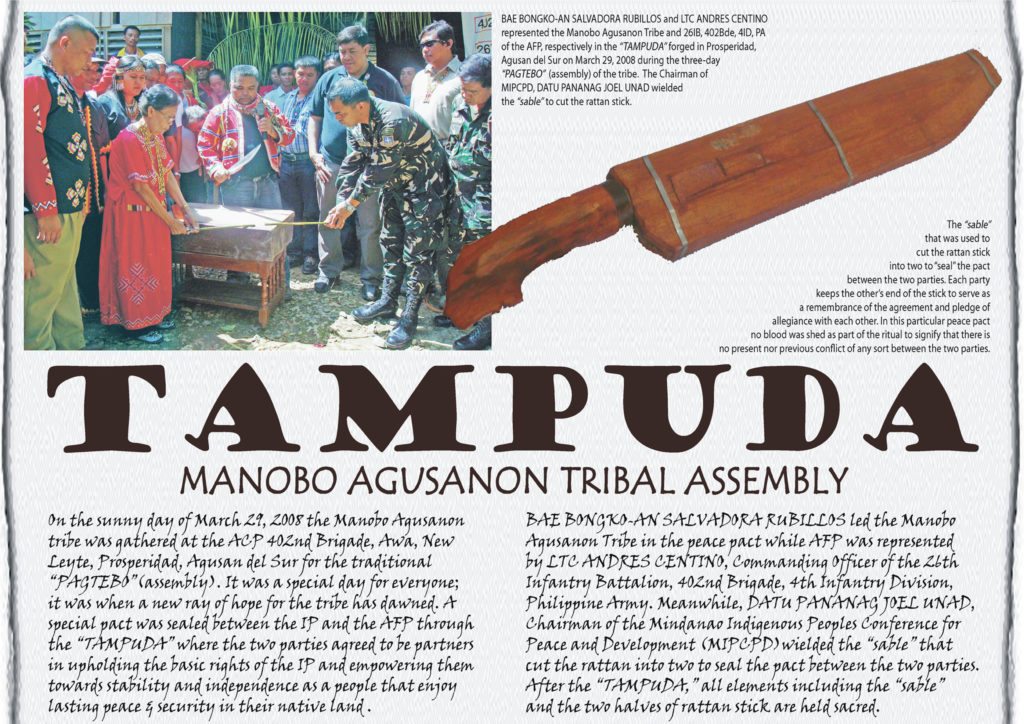
Click photo to enlarge
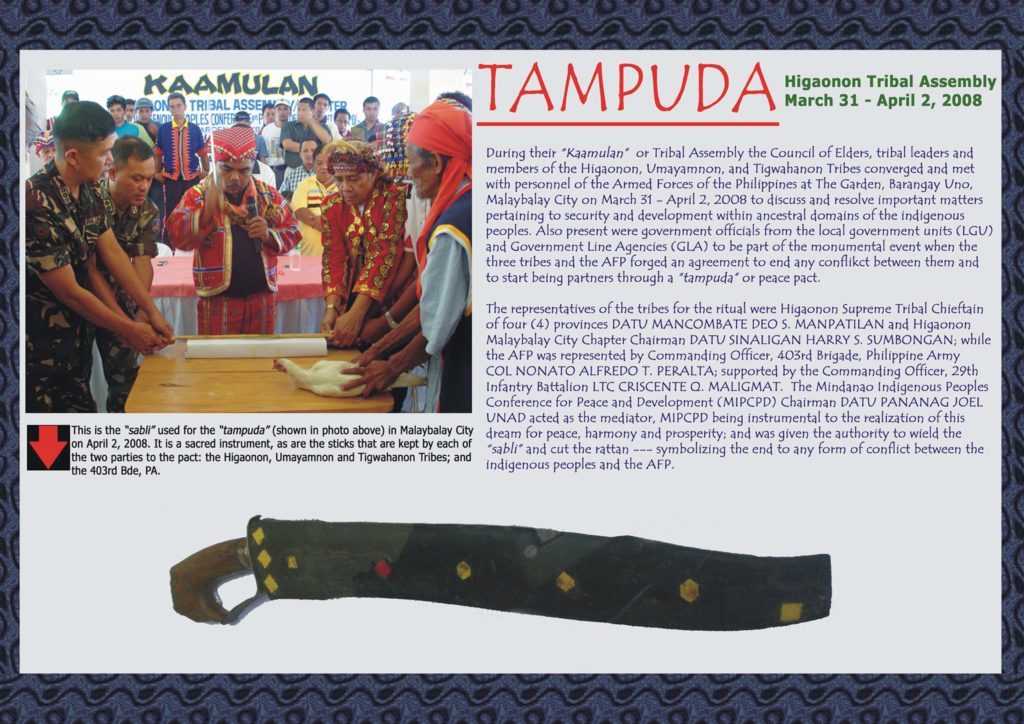
Click photo to enlarge
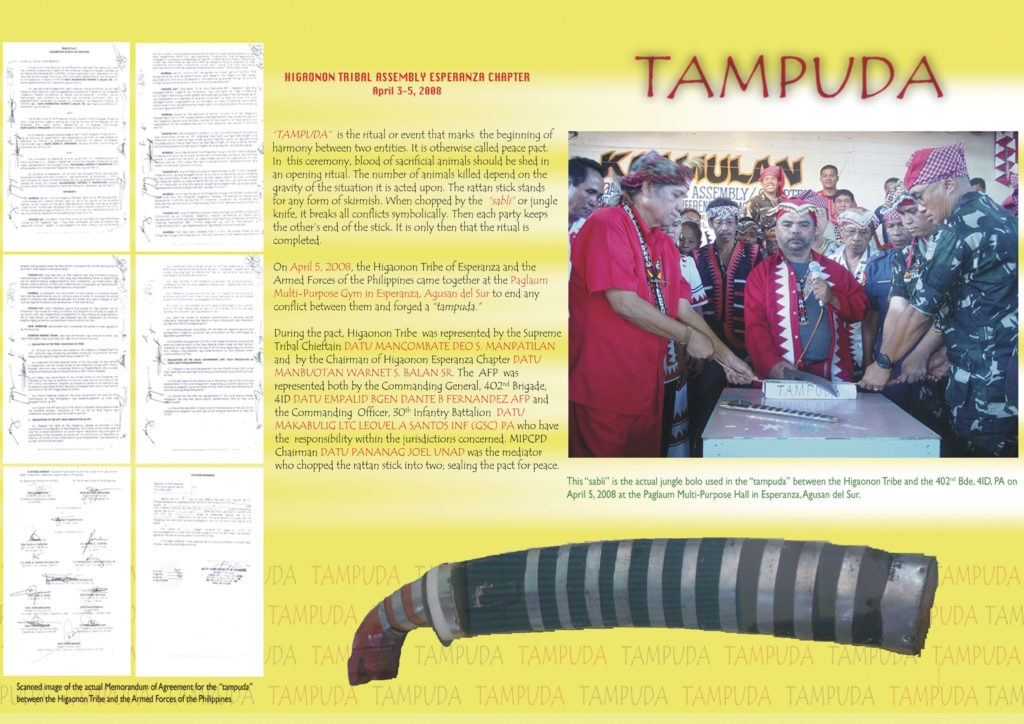
Click photo to enlarge
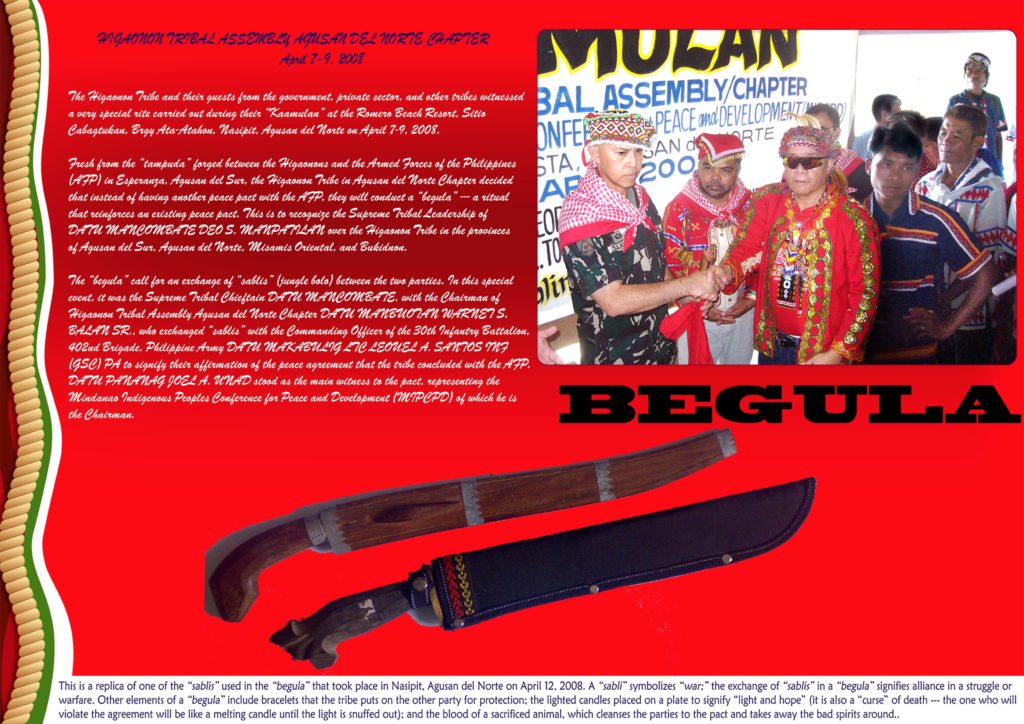
Click photo to enlarge
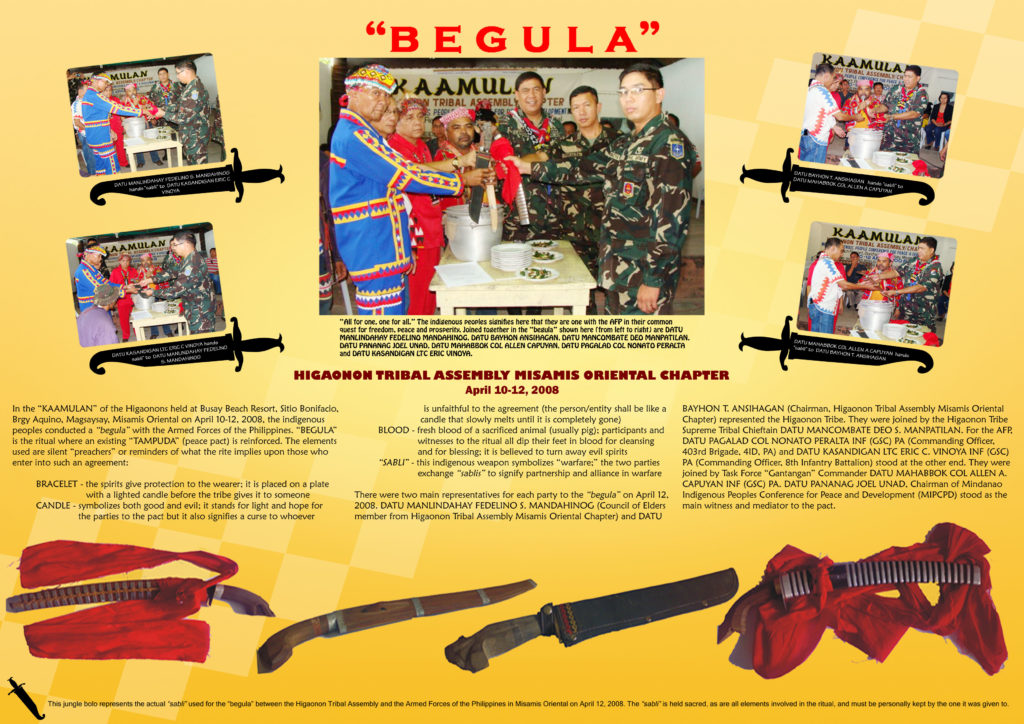
Click photo to enlarge
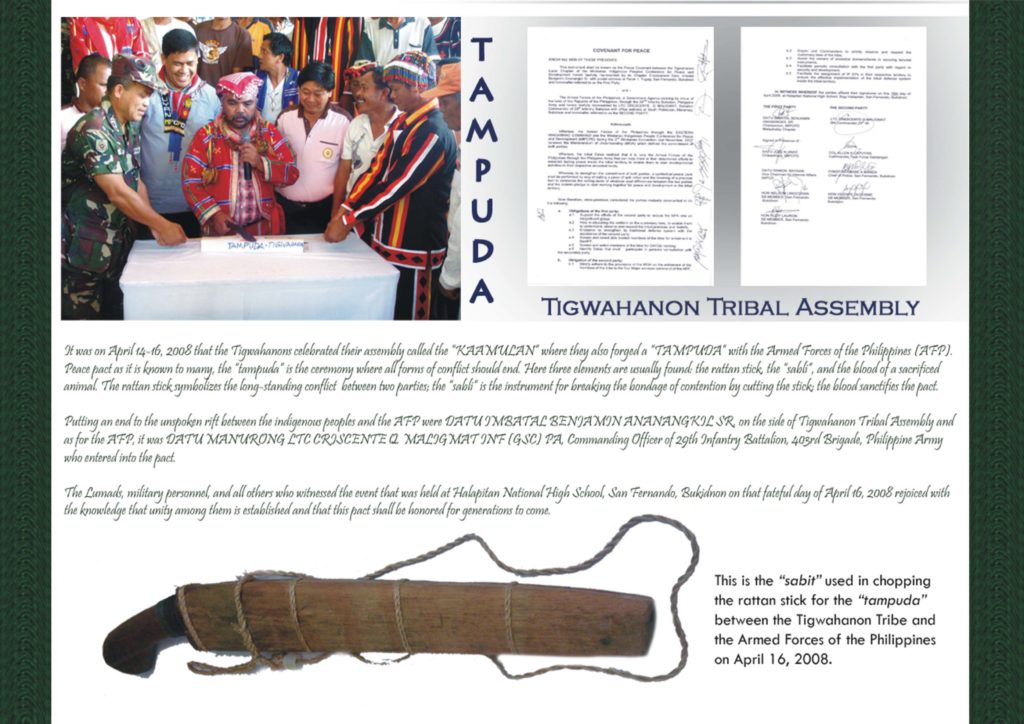
Click photo to enlarge
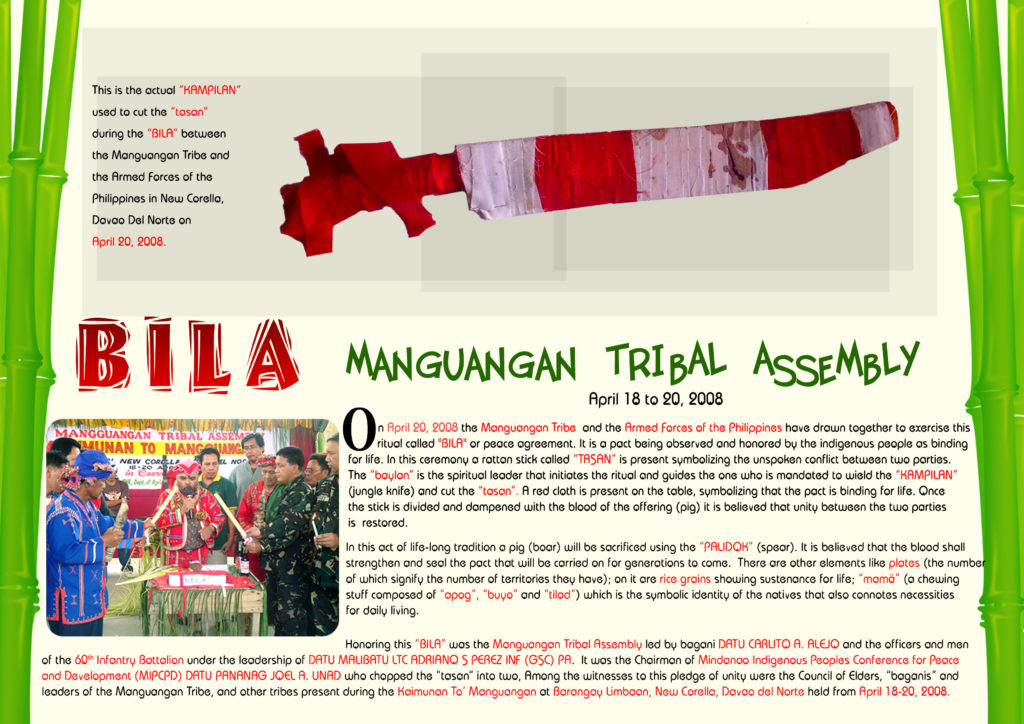
Click photo to enlarge
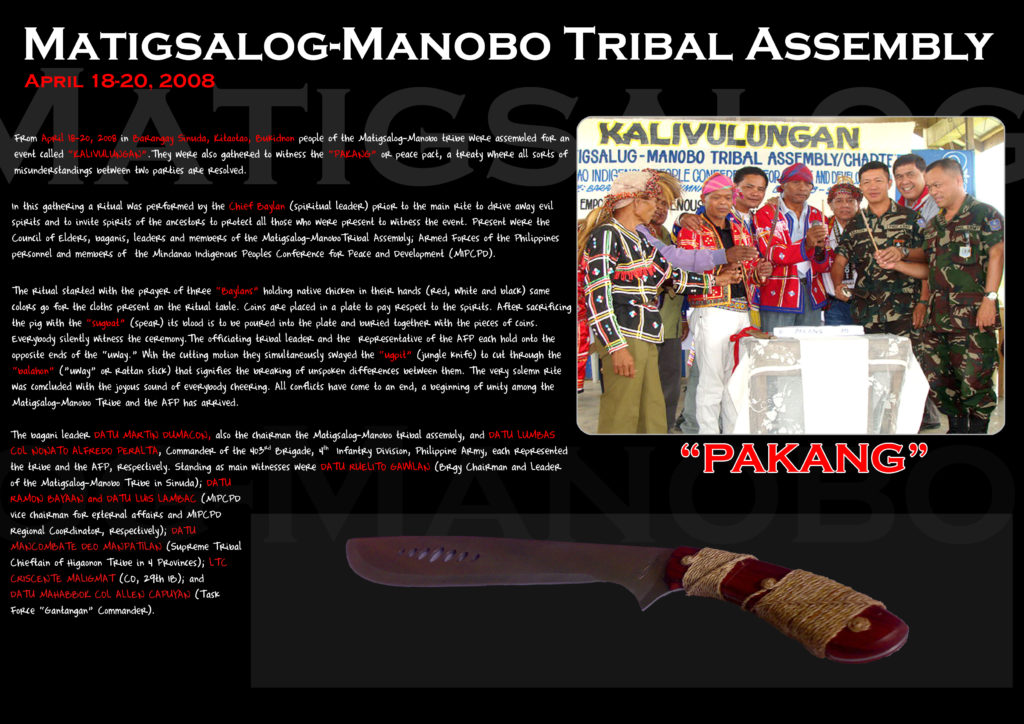
Click photo to enlarge
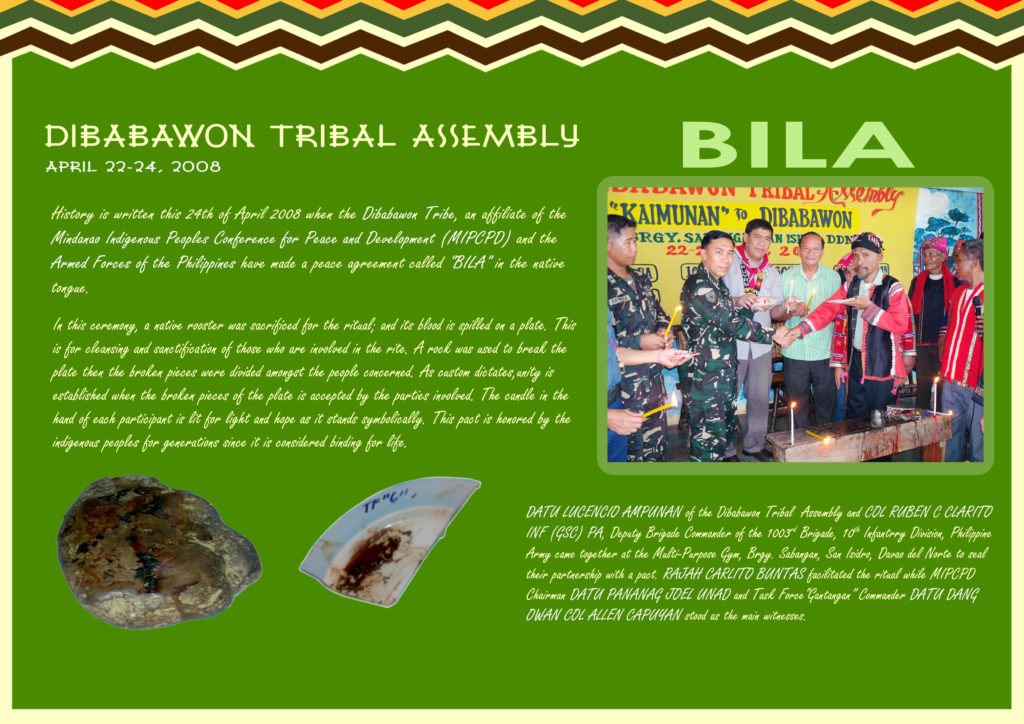
Click photo to enlarge
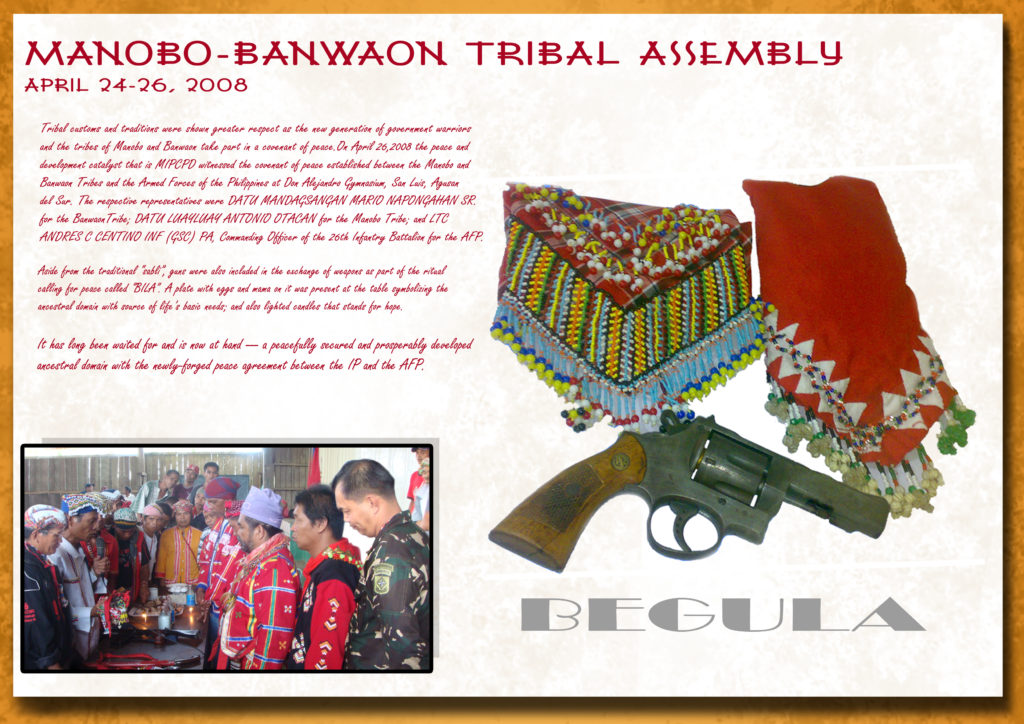
Click photo to enlarge
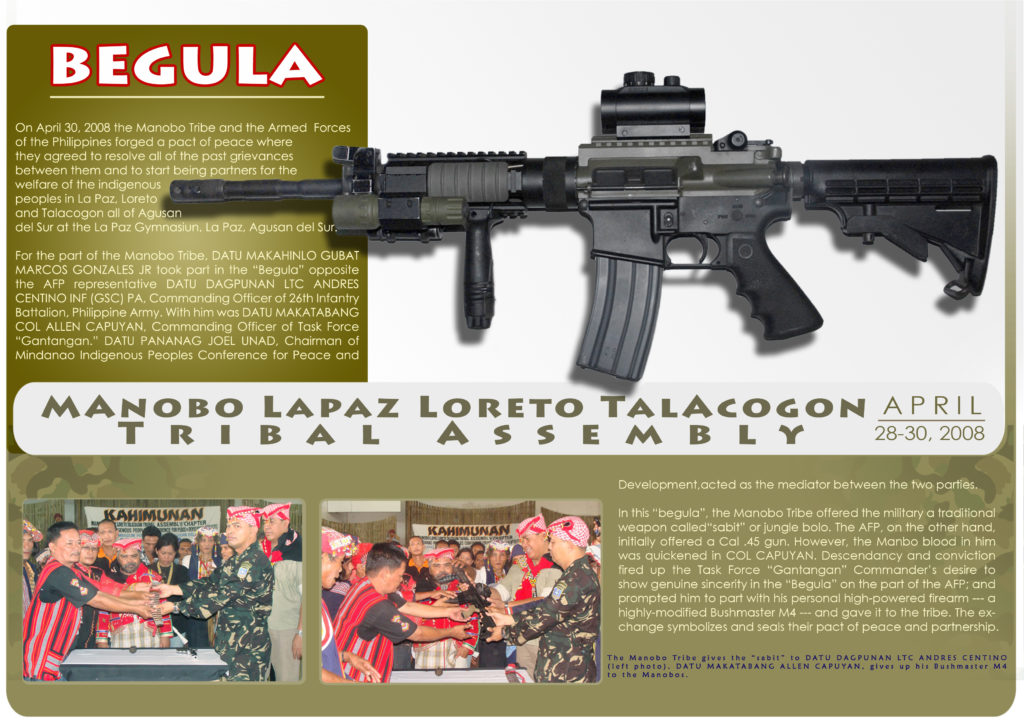
Click photo to enlarge
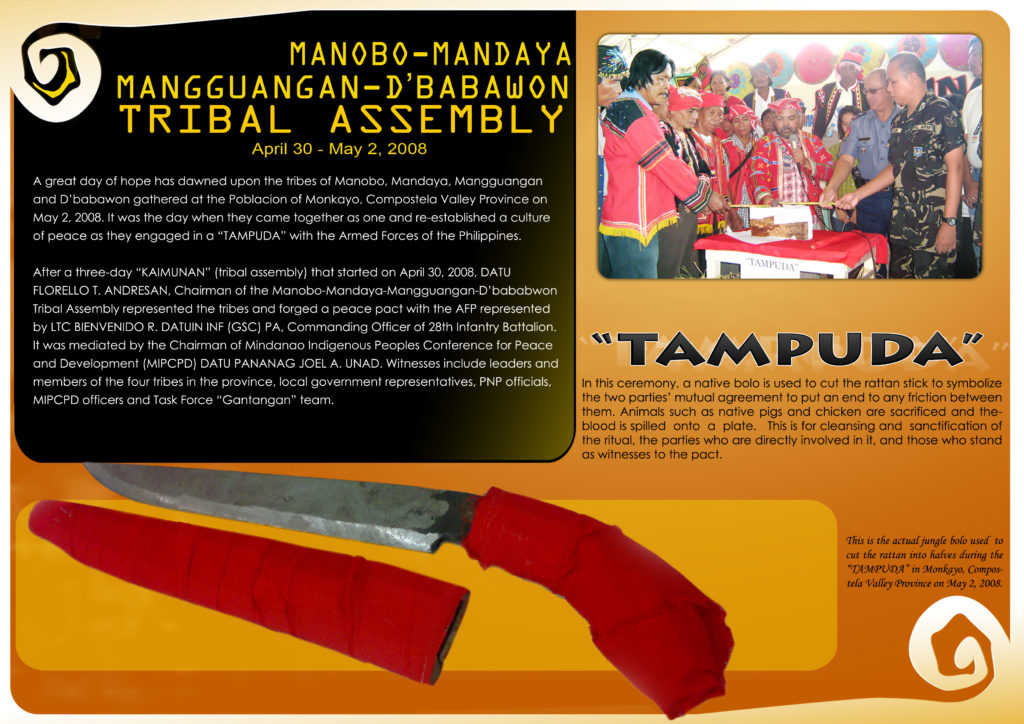
Click photo to enlarge
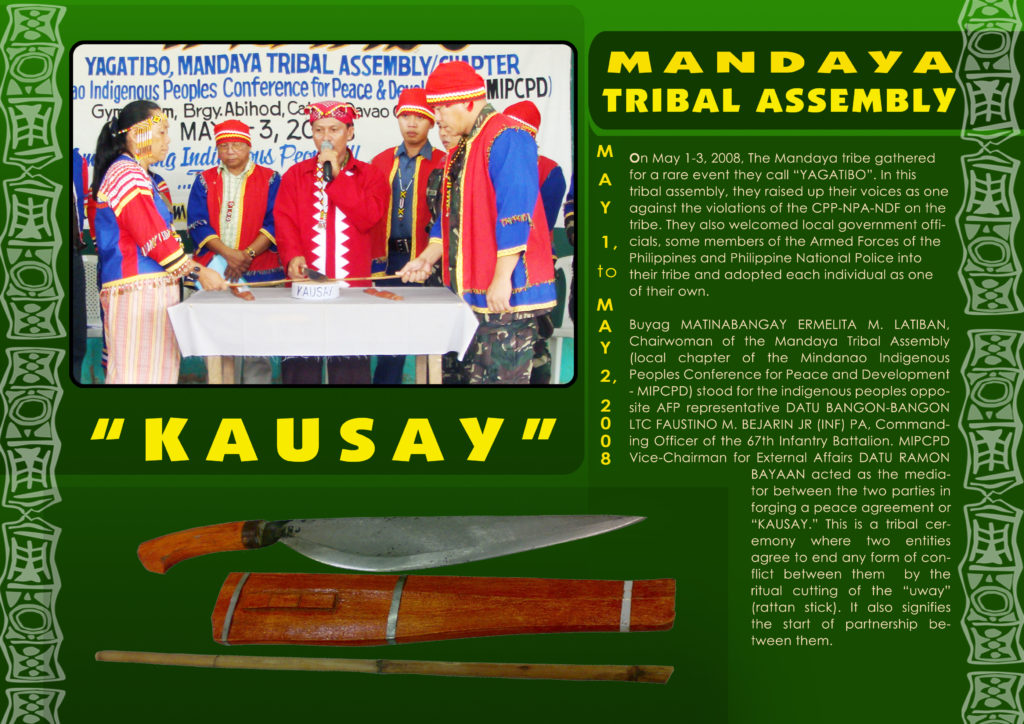
Click photo to enlarge
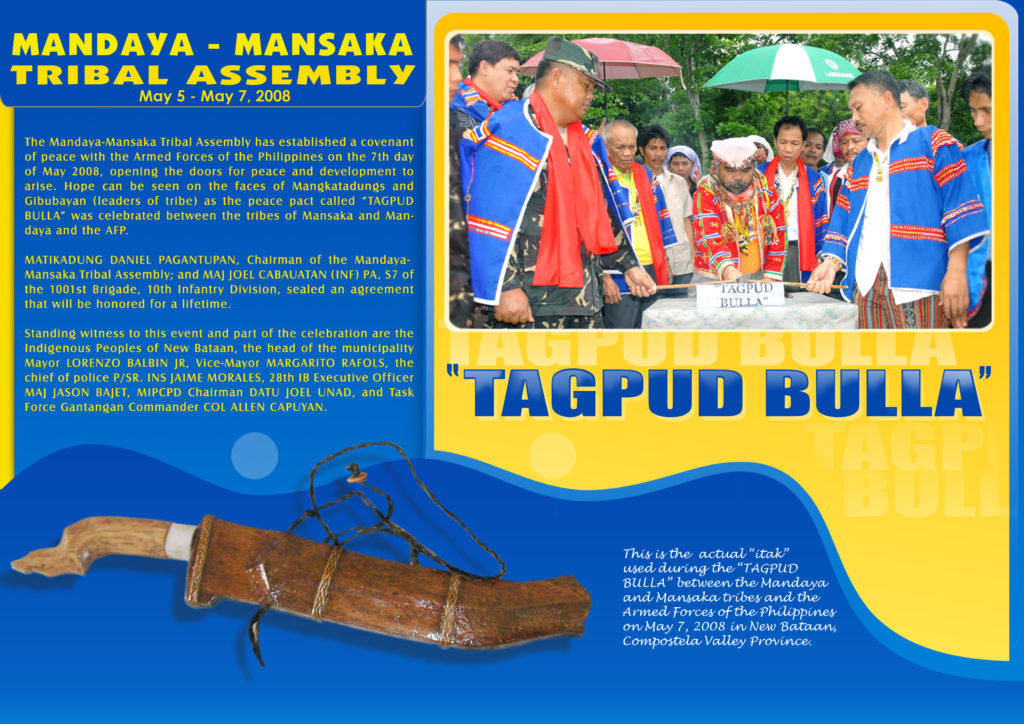
Click photo to enlarge
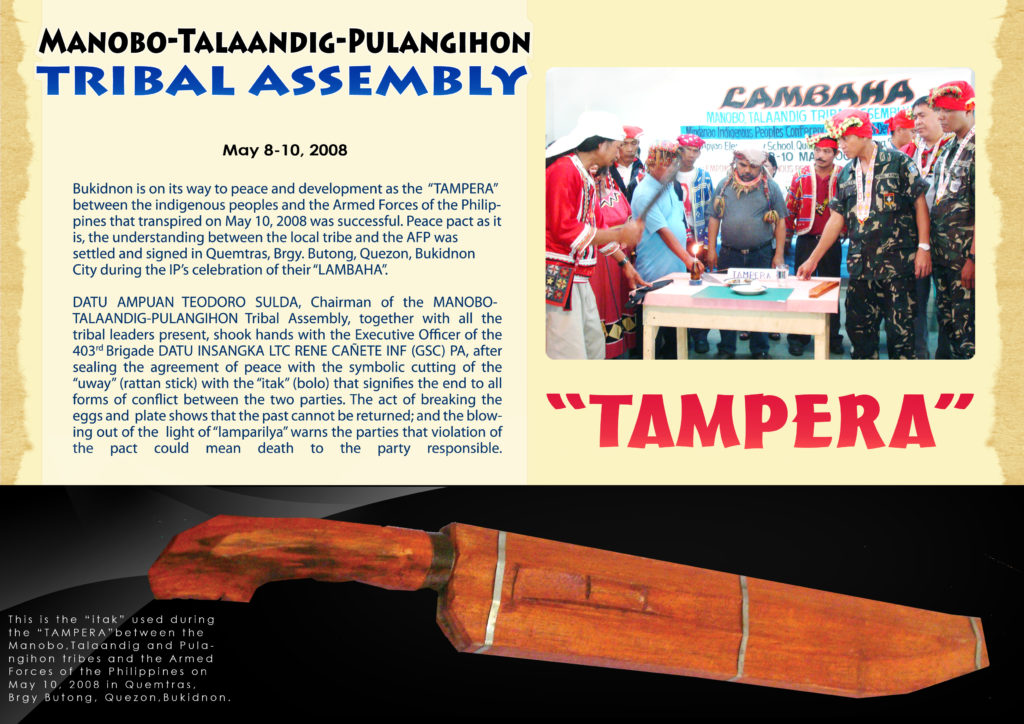
Click photo to enlarge
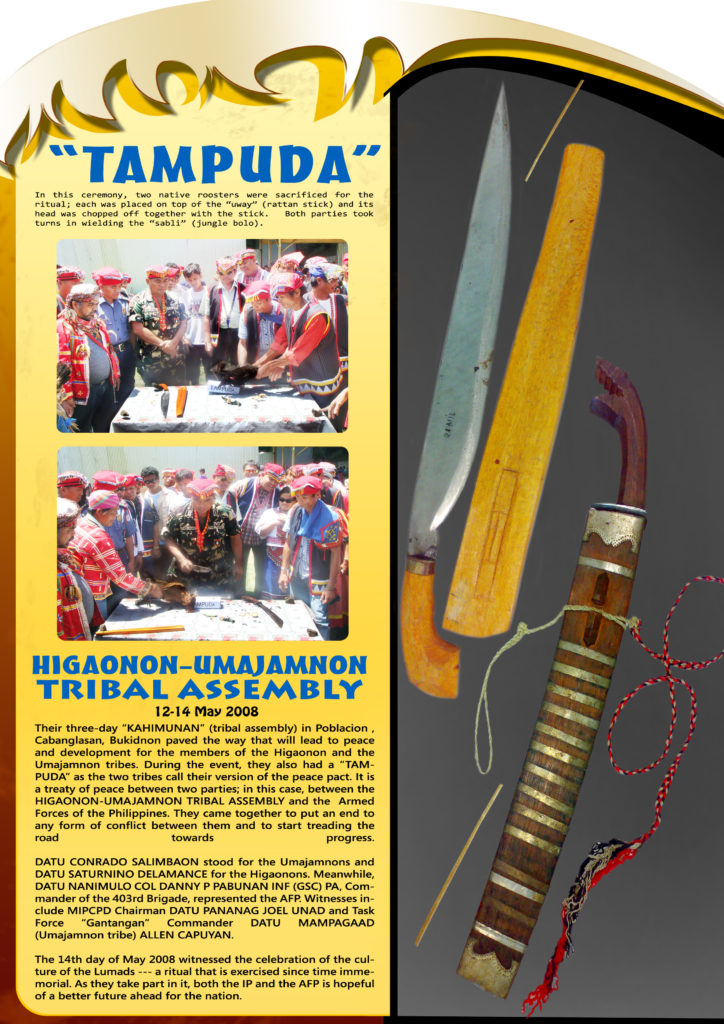
Click photo to enlarge
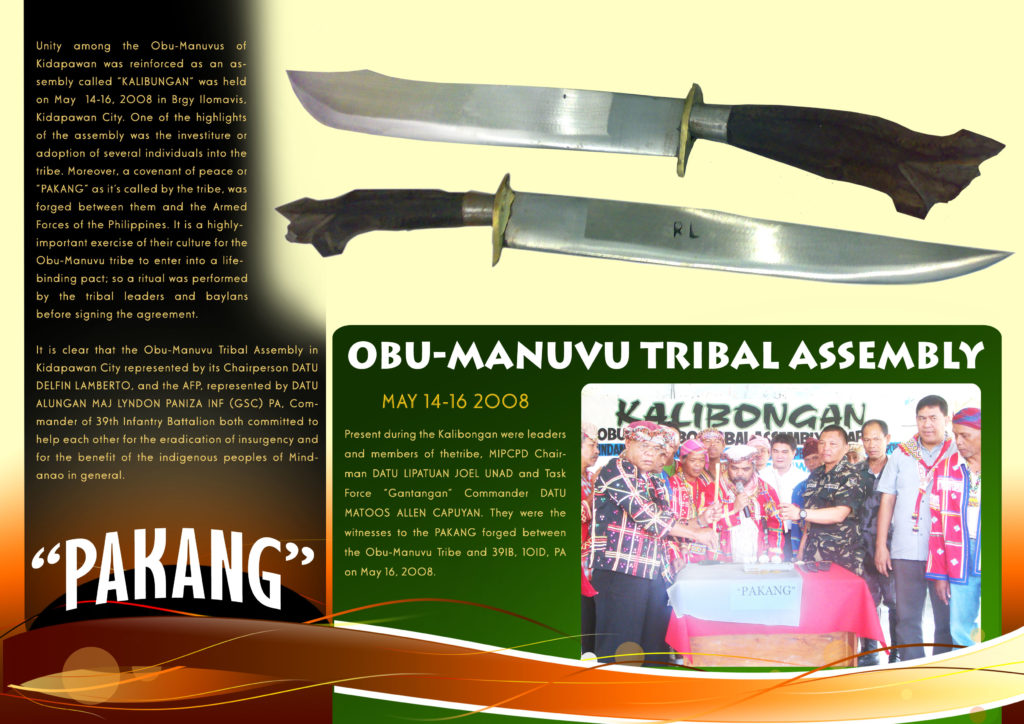
Click photo to enlarge
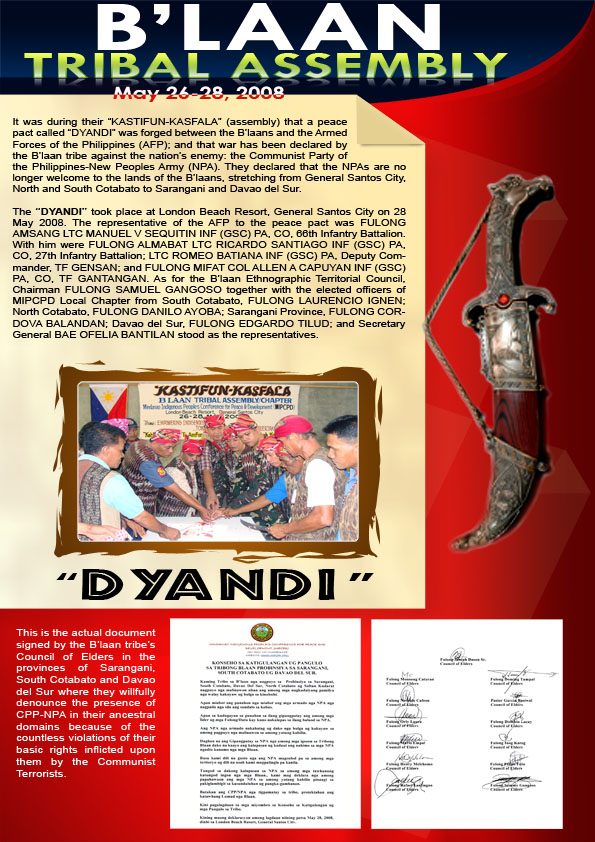
Click photo to enlarge
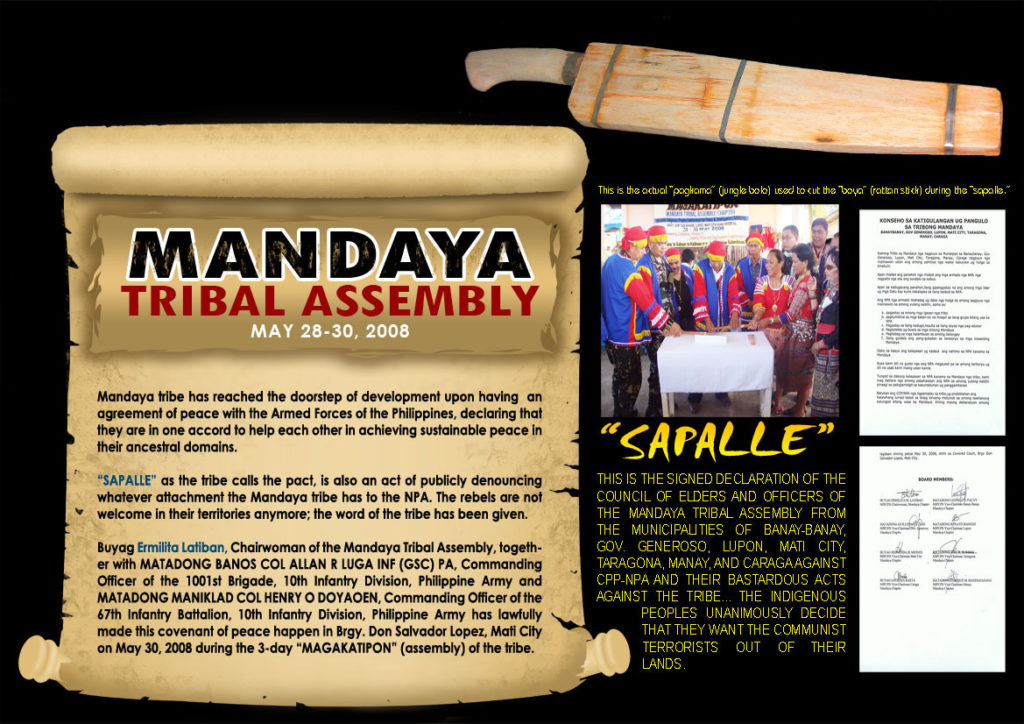
Click photo to enlarge
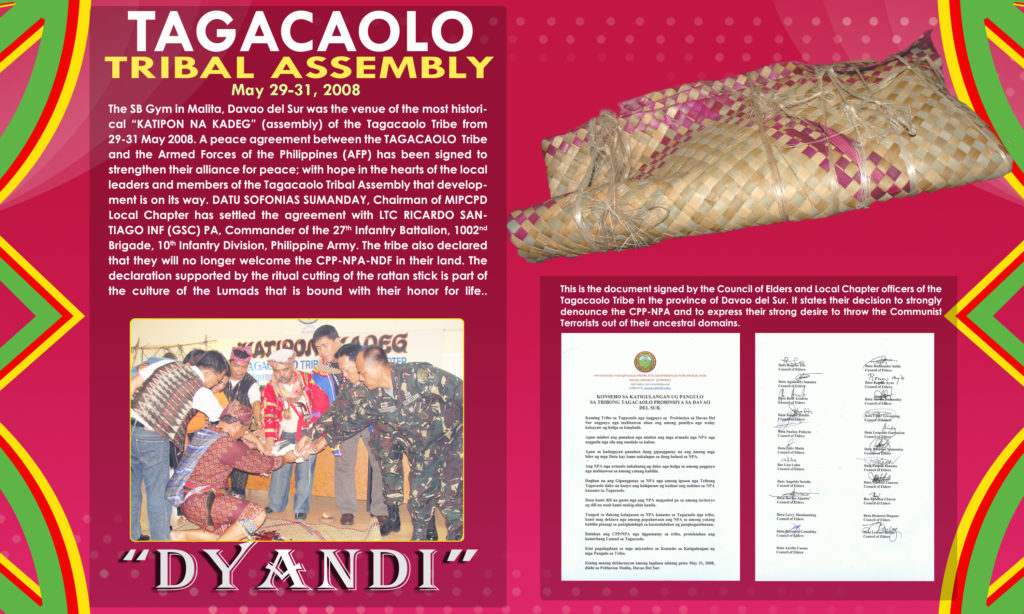
Click photo to enlarge
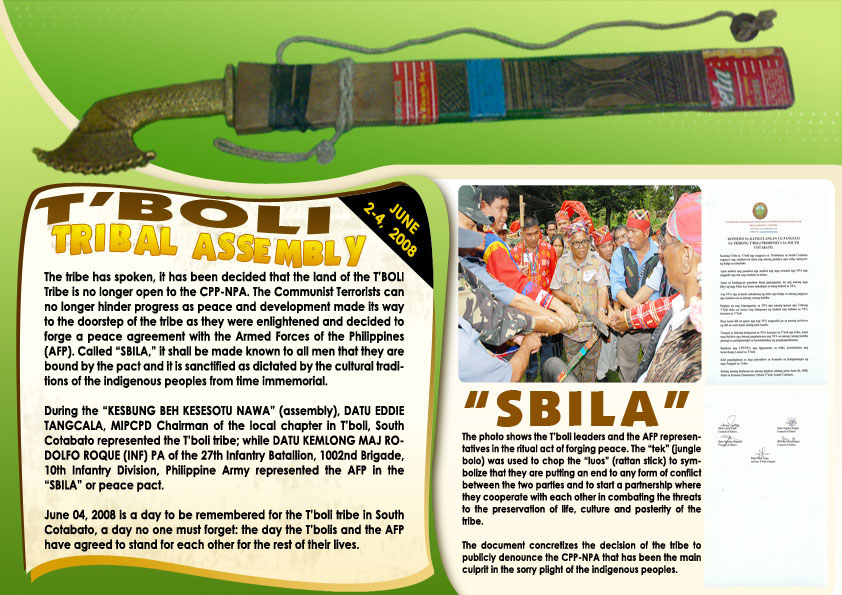
Click photo to enlarge
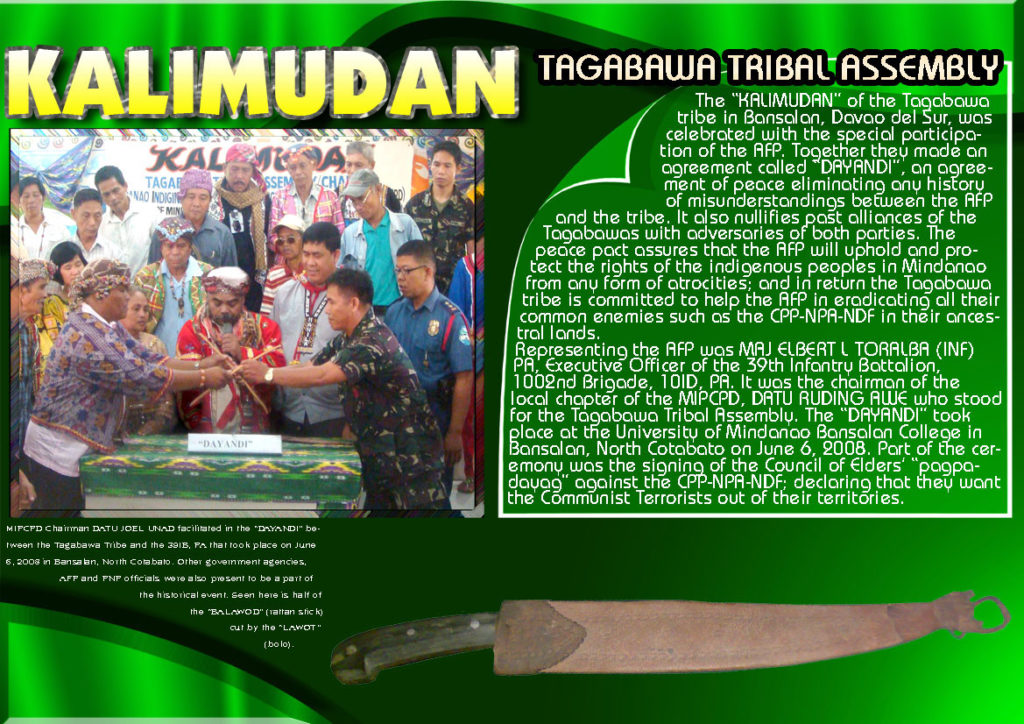
Click photo to enlarge
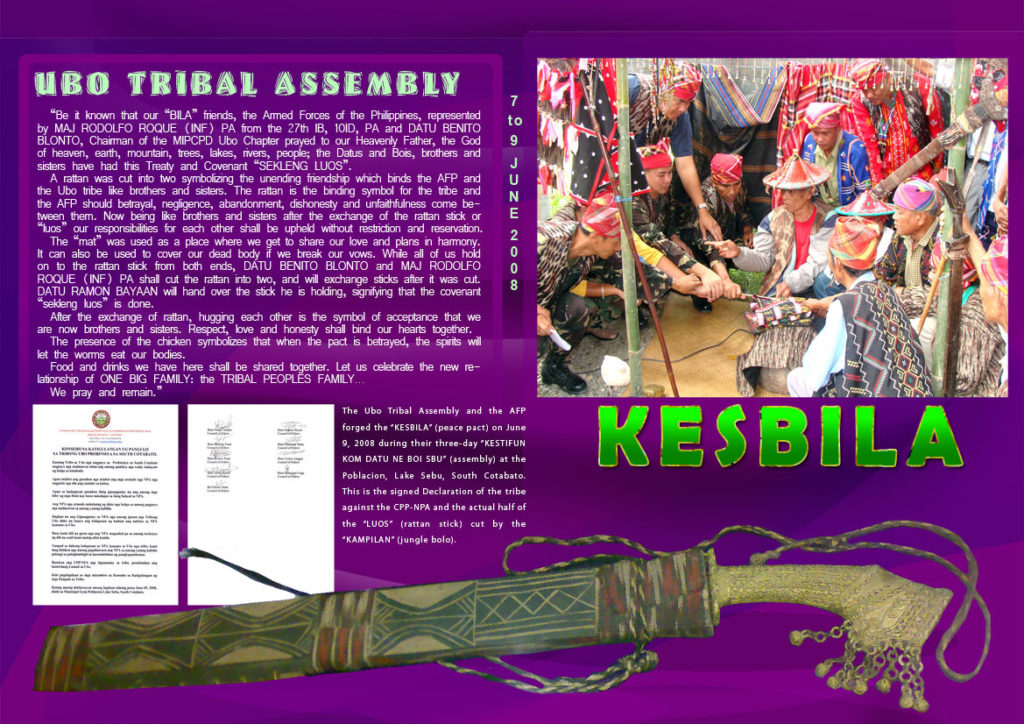
Click photo to enlarge
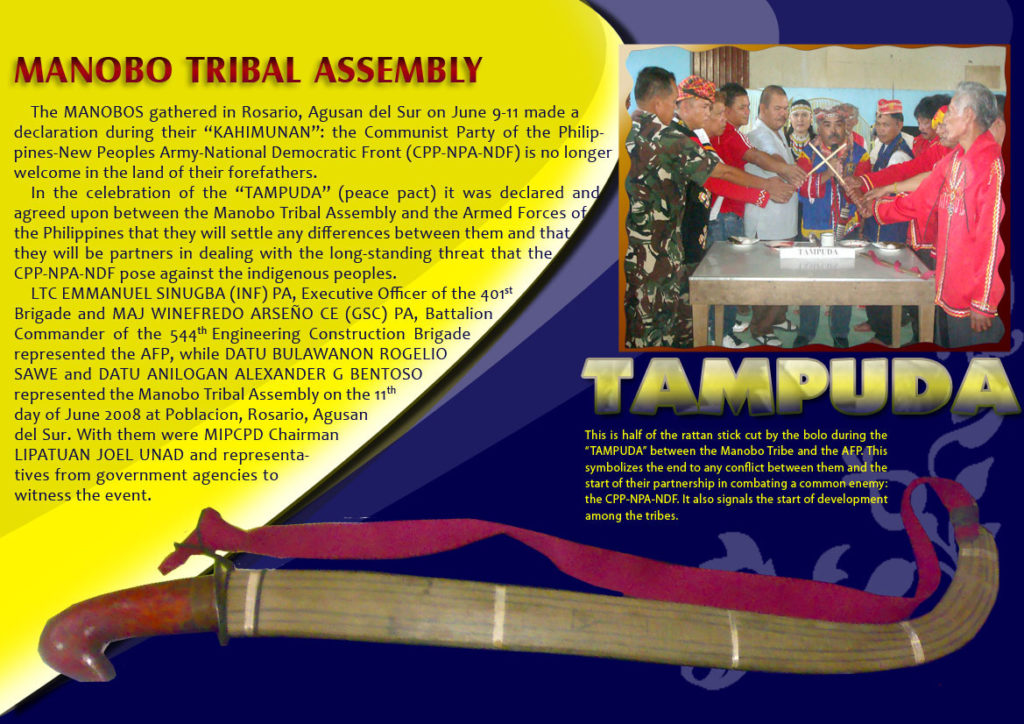
Click photo to enlarge
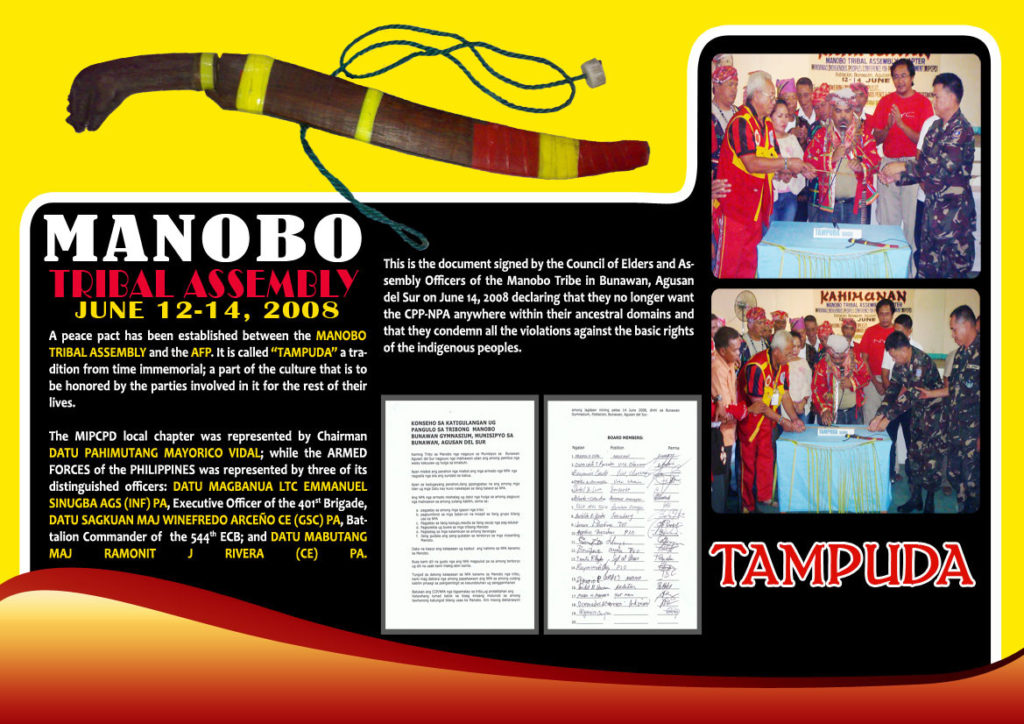
Click photo to enlarge
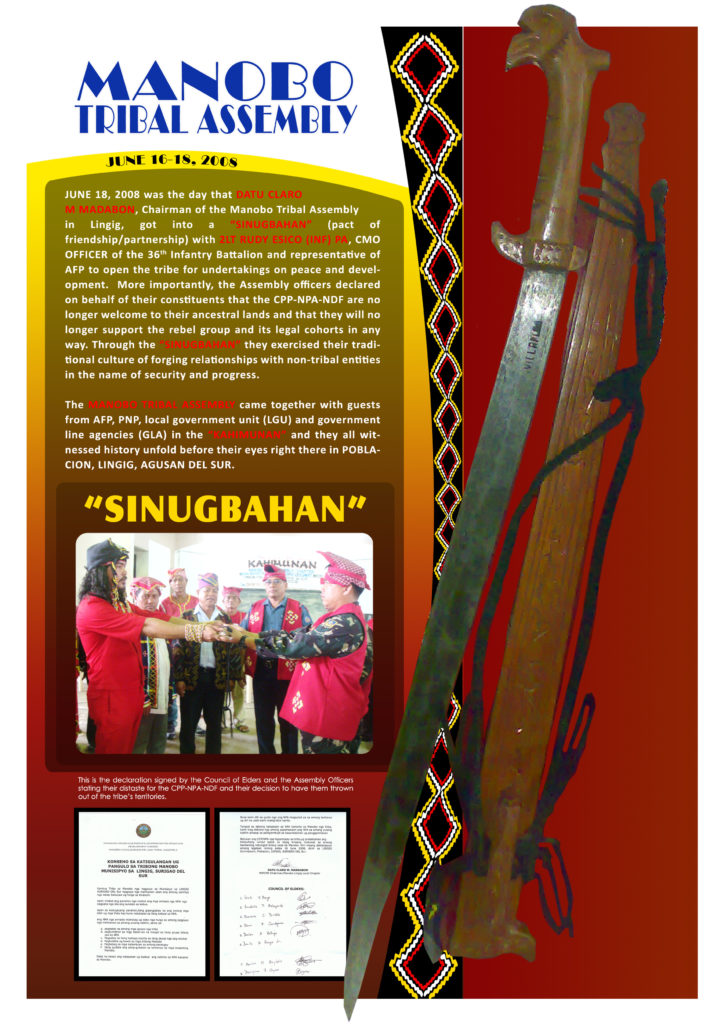
Click photo to enlarge
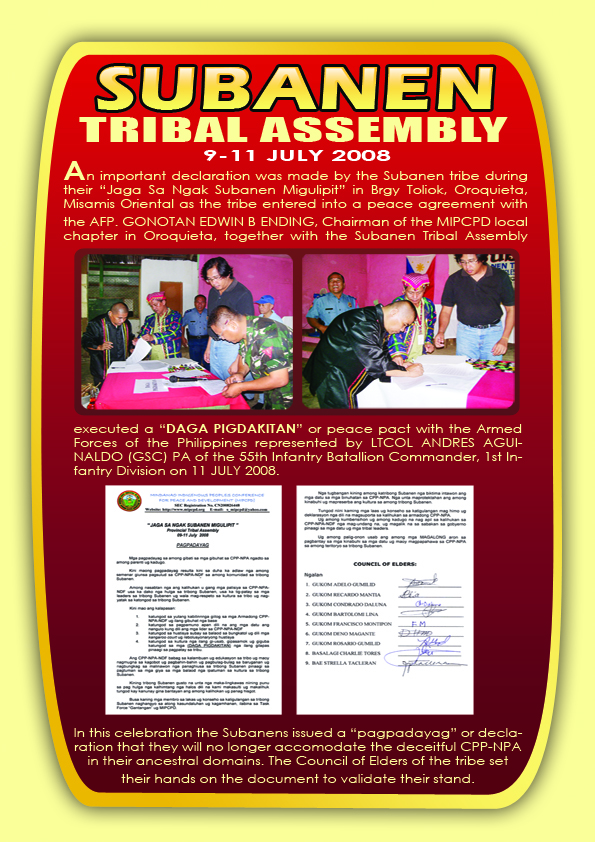
Click photo to enlarge
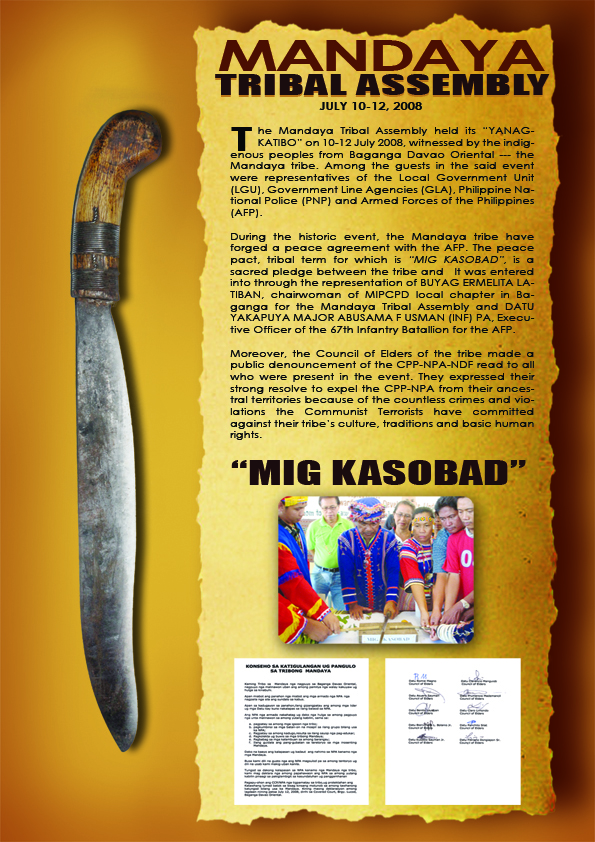
Click photo to enlarge
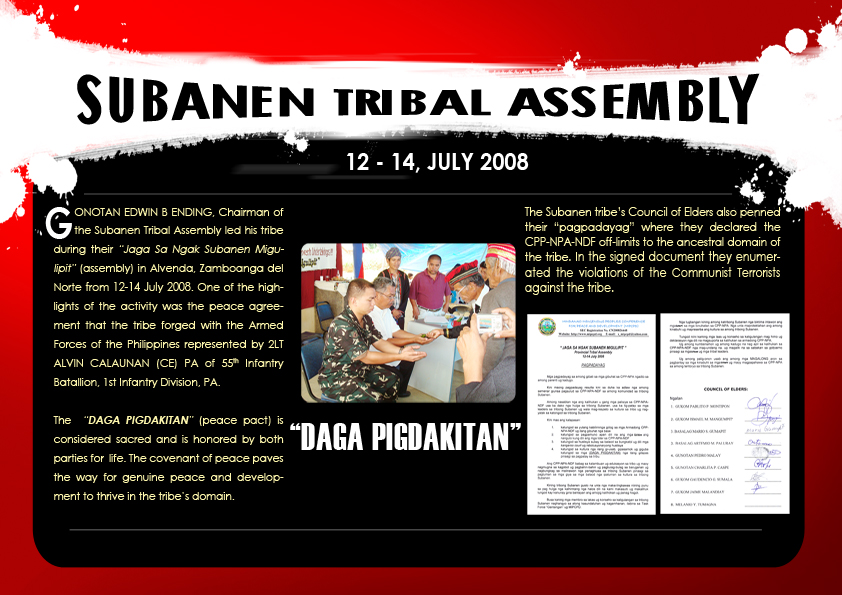
Click photo to enlarge
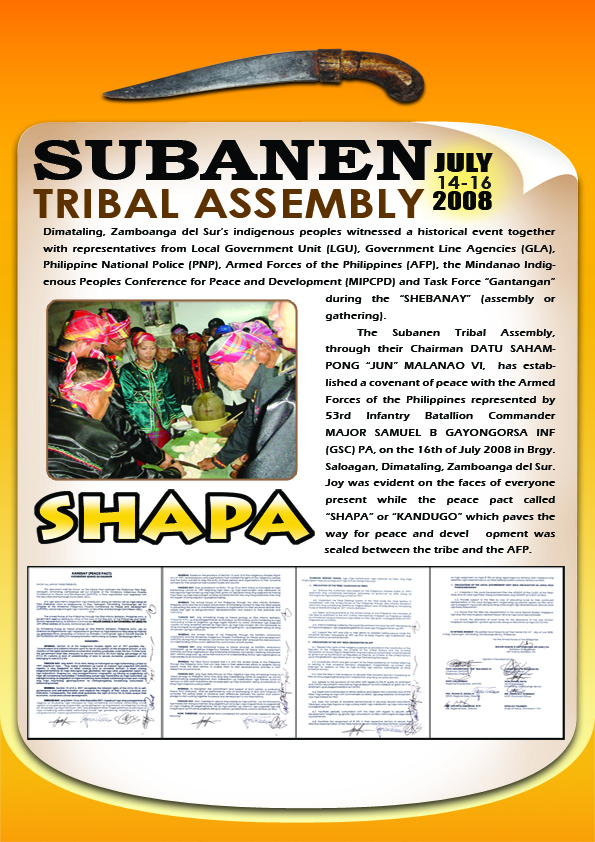
Click photo to enlarge
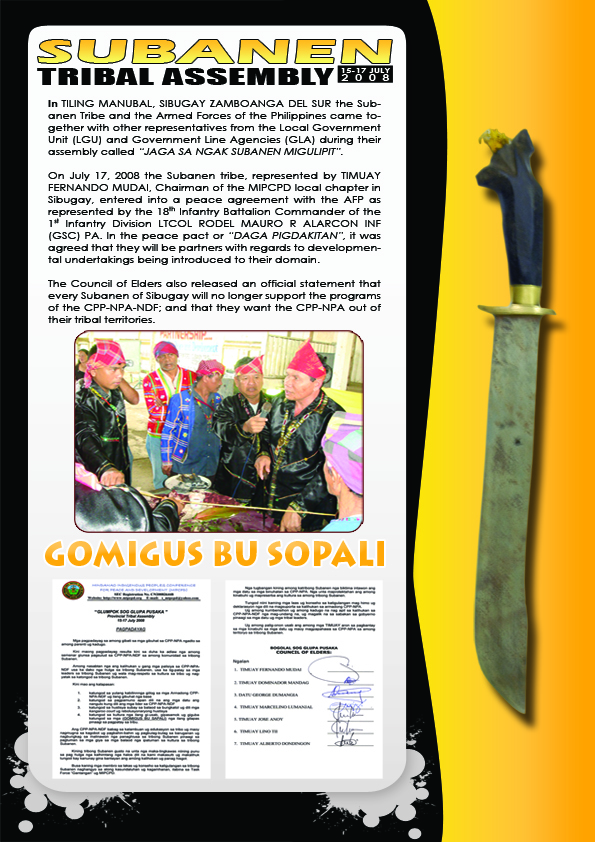
Click photo to enlarge
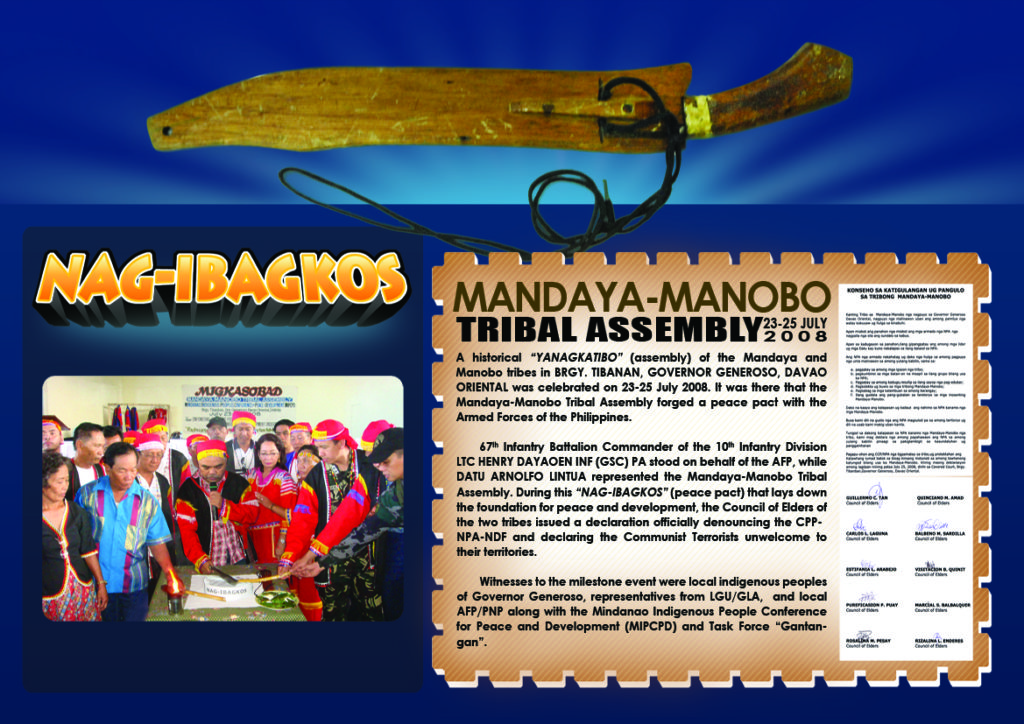
Click photo to enlarge
Updated by: Alvin Sison – April 07, 2023
